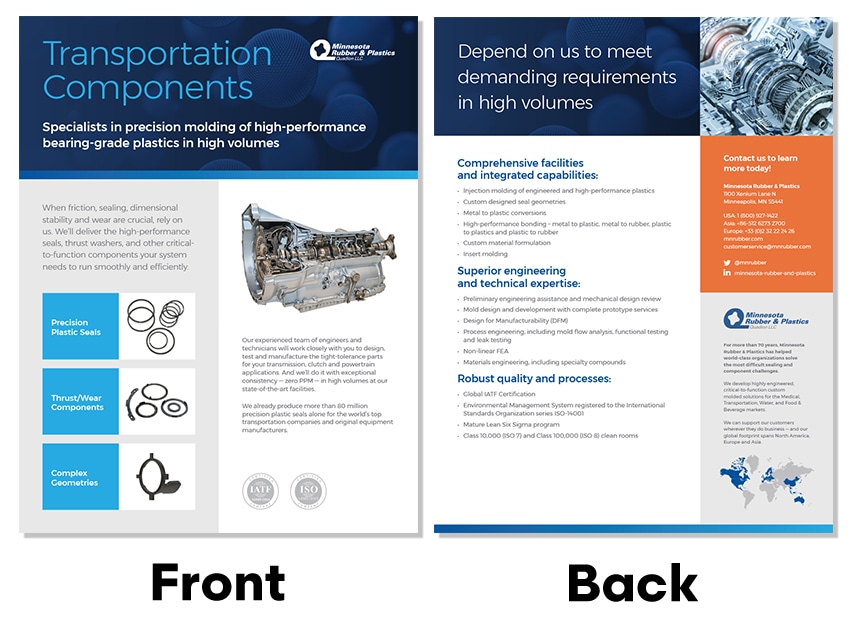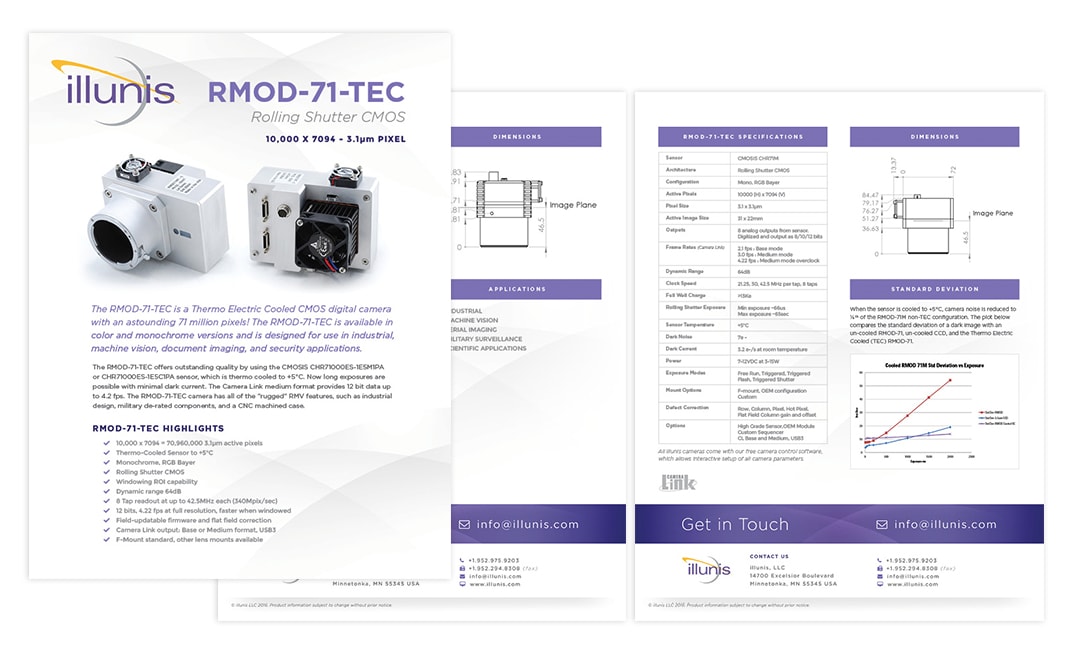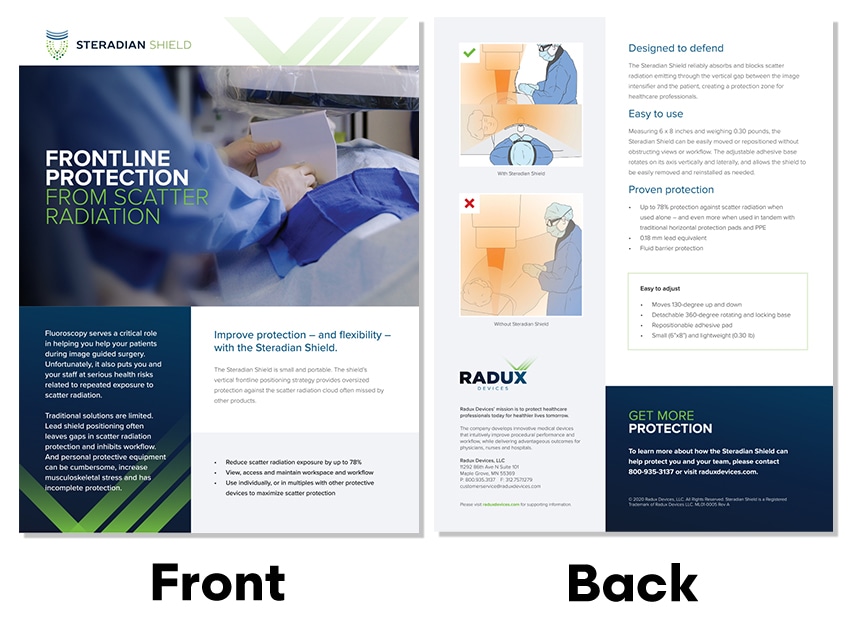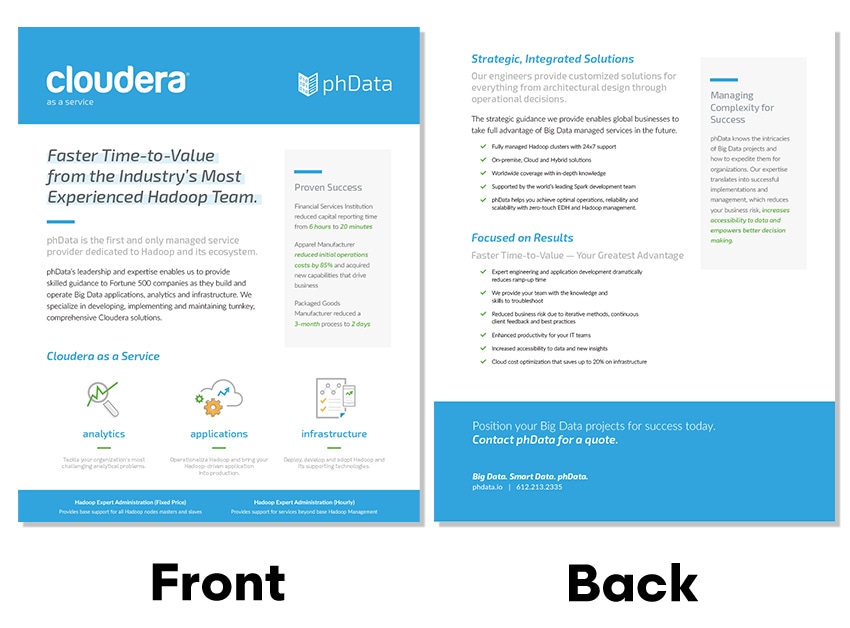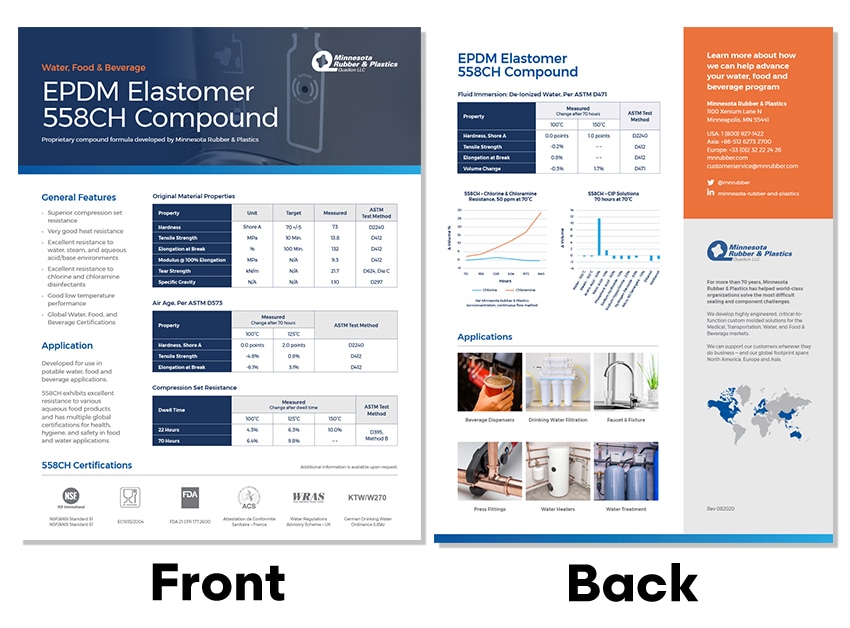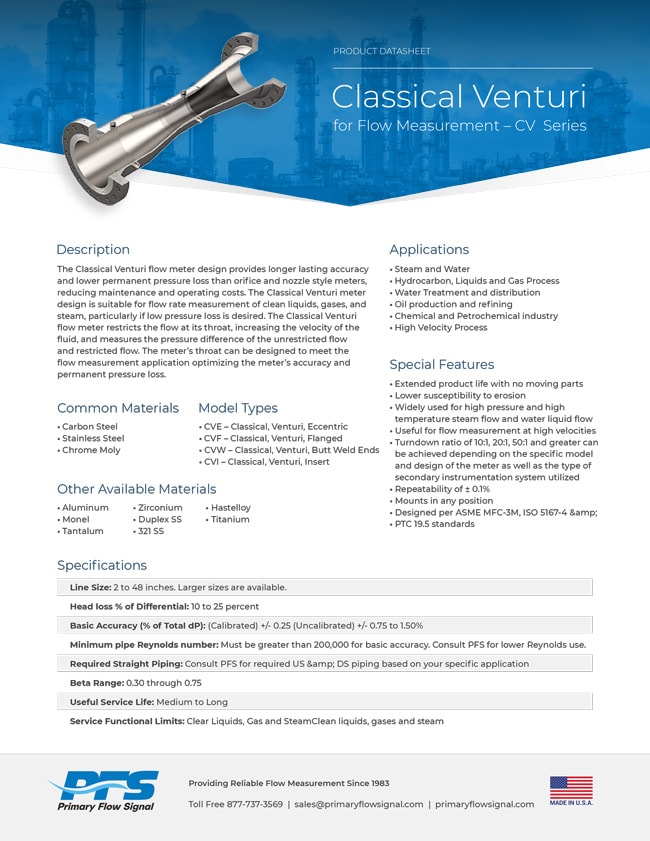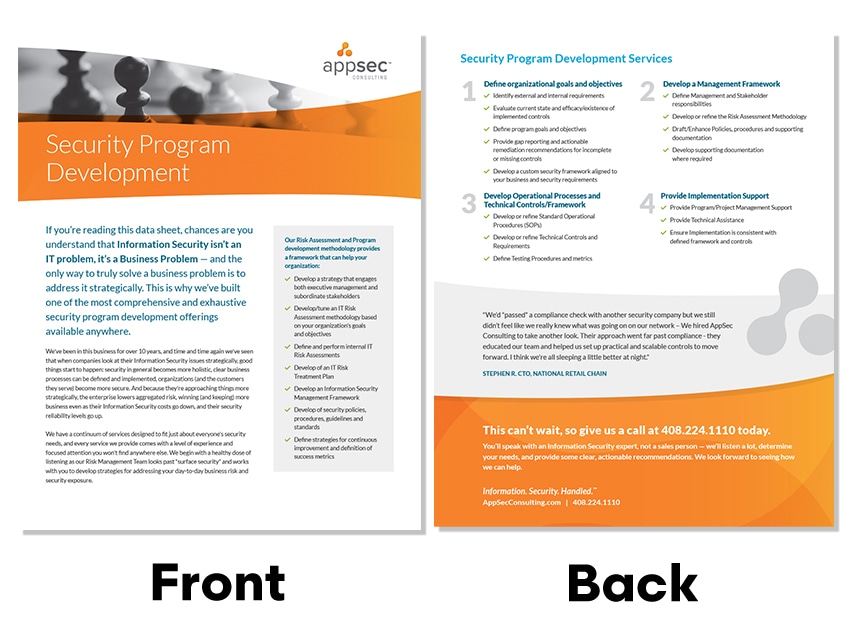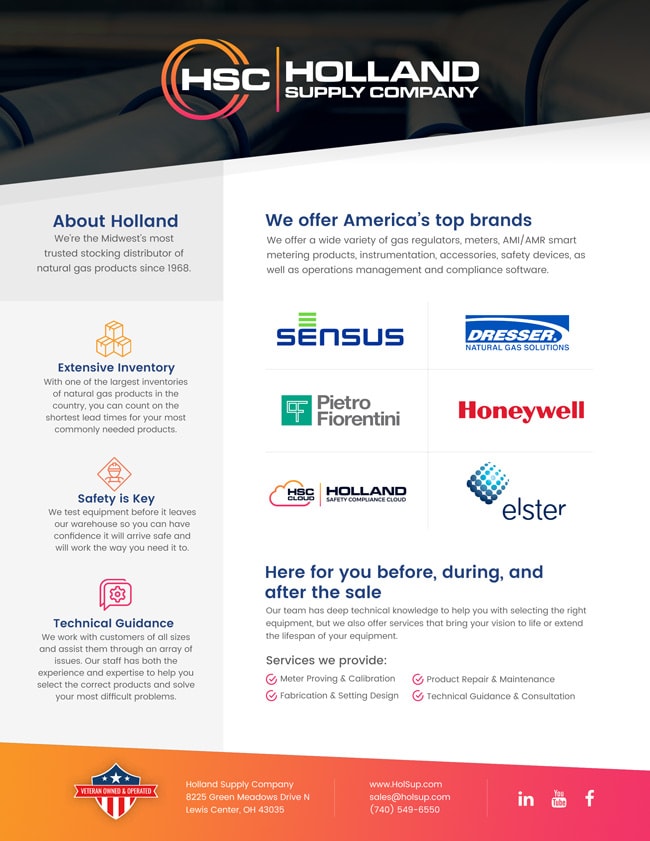A Guide to Manufacturing Sales and Marketing Collateral: Sell Sheets, Data Sheets, and Line Cards
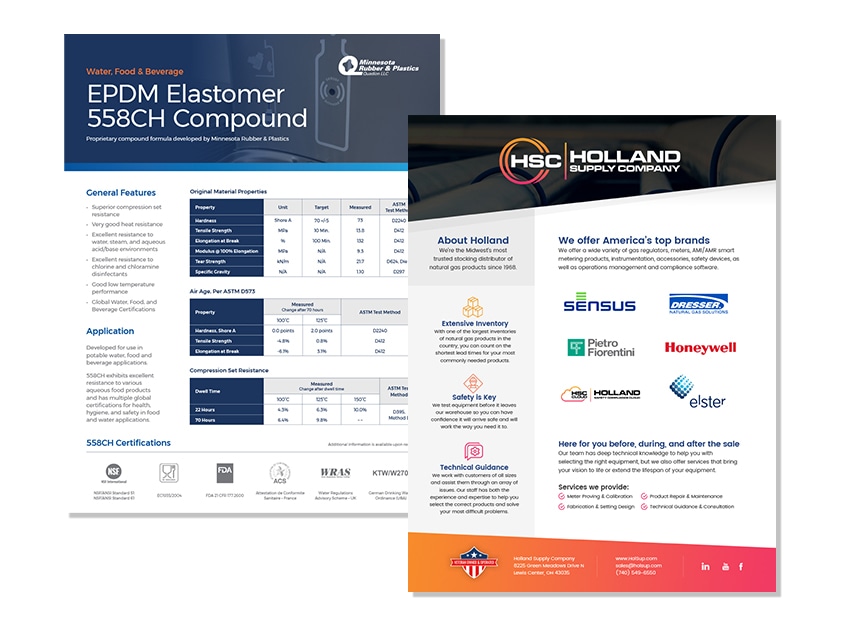
Sales and marketing collateral refers to the collected materials your sales and marketing teams use to intrigue, inform, and persuade potential buyers.
In the industrial and manufacturing space, you’ll find three main types of industry-specific sales collateral: product (or service) sell sheets, data (or materials) sheets, and line cards. Each has its own unique features, which we’ll be covering in more detail below.
What is a product (or service) sell sheet?
A product or service sell sheet is typically a one page (front and back) document that details just that — the products and services your organization sells. This form of sales and marketing collateral can be somewhat general in nature, as they’re intended to give enough information about a product or service to intrigue a viewer, but don’t necessarily include all of the data or specifications.
What’s unique about product (or service) sell sheets?
The visual graphics on a sell sheet go a long way in supporting the messaging, and these should be clean, crisp and concise to persuade a viewer to want to take action: learn more, request more detailed specs, talk to a sales person, etc. Line cards validate your business’s connections, data sheets validate your business’s product quality, and sell sheets validate your business’s ability to meet a customer’s specific needs.
Is there anything else I should know about sell sheets?
Often, product and service sell sheets will be made for lines of business as well, to overview a solution or product line, with variations created for different audiences that map key problems to your product or service solutions. Those that interact with these materials ultimately will get in touch with your organization to learn more, request specs, etc.
What is a data (or materials) sheet?
A data (or materials) sheet is a technical product summary. It takes a look at a specific product and details the most relevant information for potential buyers. Information listed on a data (or materials) sheet can include images, key features, core functionalities, measurements, and other specifications.
They’re typically limited to a single page of copy so that they’re easy for sales teams to handle, carry, and distribute.
What’s unique about data (or materials) sheets?
Data sheets focus on products while line cards focus on suppliers and material sheets focus on customization and production. Their success is in their ability to answer a few upfront questions most potential buyers will have:
- What are key features of this product?
- How does it work?
- What does it do?
- What benefits does it provide?
Is there anything else I should know about data (or materials) sheets?
Just like with most manufacturing sales collateral, data (or materials) sheets aren’t meant to be considered marketing materials. They don’t exist to persuade more so than they exist to inform. In industrial and manufacturing industries, sales cycles can be long and are typically with straight forward, tech-minded buyers.
That means offering them a concise, direct product snapshot and giving them the chance to ask your sales team questions is a recommended approach. It gives your team the opportunity to engage in a way that solidifies their status as an offerer of answers and solutions. That, in turn, can open up an avenue to actual sales.
Are these the same as materials safety data sheets (MSDS)?
Data and more generic materials sheets aren’t meant to be confused with Materials Safety Data Sheets (MSDS), which are documents that contain chemical hazard information about waste materials. If you google materials sheets, you’ll see a lot of information about MSDS. Because of this potential confusion, it’s always best to reach out to an expert on industrial and manufacturing marketing and sales to make sure nothing gets confused.
What is a line card?
A line card is a piece of sales collateral that lists the names, descriptions, and manufacturers of products sold by a third party, primary being distributors. For example, if your distribution company offers natural gas pipe fitting solutions, your line card will show the manufacturers and supply houses your valves and gauges are coming from.
It gets its name from the fact that it answers the question, “What lines do you carry?”
What’s unique about line cards?
A line card shows your supply lines and ability to connect customers to the products they need. It lists a lot of information at once, so it doesn’t offer the details you might get from materials or data sheets, but it does do the best job at showing a customer how broad your reach can be.
Is there anything else I should know about line cards?
A question that we’ve had come up in regards to line cards is, “If my line card lists the manufacturers I represent, what will stop prospective customers from bypassing me and going directly to those manufacturers for the products?” It’s a valid concern, but we’ve found that as long as your line card is thorough and well-developed, most prospects won’t even think about circumventing sales.
Here’s another way of looking at it: if someone offers you a delicious sandwich, you’re not going to leave it there to go to the store to find and buy the ingredients to make it yourself when it’s already in front of you. The same goes with line cards: as long as they’re expertly crafted, informative, and presented by an engaging sales person, then they’ll do nothing but add value to your sales team’s efforts.
What about other types of sales collateral?
The three varieties of sales collateral we’ve listed above aren’t the only types of sales collateral, true. They are, however, the types that are especially relevant in the manufacturing and industrial markets due to their particular and sometimes lengthy sales cycles.
Other types of less niche sales collateral that can be developed for your technical business include video, white papers, blog posts, brochures, testimonials, and case studies. These can all be helpful parts of a robust content strategy, but today’s post is focusing on collateral that is exclusive to the industrial and manufacturing industries we serve.
How do I make sure my sales collateral converts?
Making sure your manufacturing sales collateral leads to conversions starts by guaranteeing your sales team knows what to do with it. Here are a few things to keep in mind:
Have a plan for how your sales team will handle the collateral. Just giving sales the documents and never following up won’t be enough to guarantee success. Whenever you have a new piece of collateral created, make sure you’re able to answer the following questions:
- What is our intended goal with the development of this collateral?
- Do we have a plan for measuring it’s relative success?
- If so, what is it, and do we have a plan for when we’ll review these measurements?
- Do we want our sales collateral to be digital, physical, or both?
- How do I want the sales team to use this collateral and how will I make sure they’re properly trained on it?
Do some competitive research. There’s nothing wrong with seeing what your direct competitors are up to, especially when it comes to sales collateral. Learning about what’s working best for others will work better for you. Additionally, if you intend to create a data sheet that offers product comparison, you have to make sure your data is verifiably correct.
Keep communication open. No one is going to know what’s working and what isn’t better than your sales team. Make sure the door is open for them to speak to you, share ideas, and make suggestions. The more engaged the sales team is with the collateral development process, the more likely they are to be able to deliver results with it once it’s been developed.
Wrap-Up
Sales collateral pieces like sell sheets, data sheets, and line cards are unique to industrial and manufacturing industries. That’s because those industries have equally unique wants, needs, sales cycles, and pain points. Understanding what sets your industry and business apart is the first step in finding solutions that are tailor-made for your needs.



